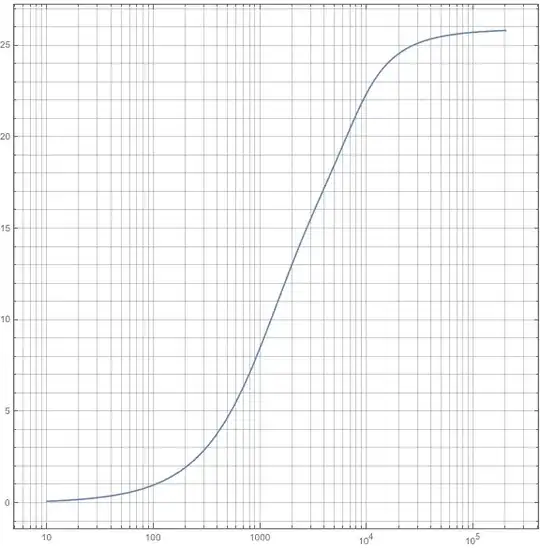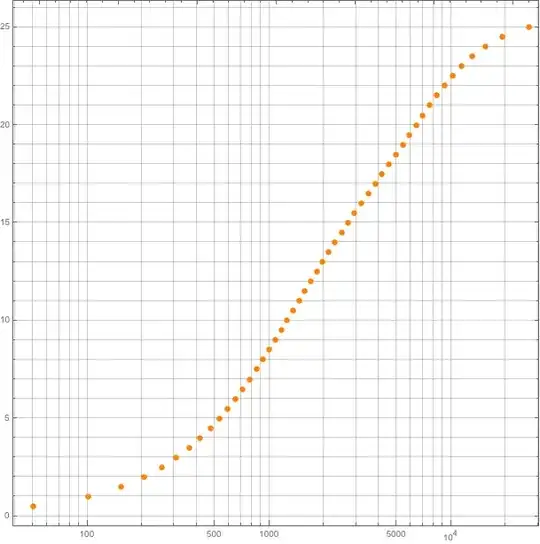You received a nice solution from @heropup.
If you need to solve for $f$ (given in $kHz$) the equation $$b=13 \arctan(0.76 f)+3.5 \arctan \left( \frac{f^2}{57.25} \right)\tag 1$$ what I would suggest is to use the nice table given by @heropup and build a cubic spline for $\log(f)$ as a function of $b$. This need to be done only once and then to be applied. If you want to go further for more precise results, the result from the spline will give you the estimate $f_0$ from which Newton iterations could start. If the equation to solve is $$\Phi(f)=\alpha \arctan(\beta f)+\gamma \arctan \left( \frac{f^2}{\delta} \right)-b$$ you would get $$\Phi'(f)=\frac{\alpha \beta }{1+\beta ^2 f^2}+\frac{2 \gamma \delta f}{\delta ^2+f^4}$$ and the iterates would be given by $$f_{n+1}=f_n-\frac{\Phi(f_n)}{\Phi'(f_n)}$$
On the other side, searching the Web, I found this link in which you will notice that they propose for the inverse $$f=b \left(\frac{e^{0.219 b}}{352}+0.1\right)-0.032 e^{-0.15 (b-5)^2}\tag 2$$ which seems to be a "reasonable" approximation.
If we inject a value $f_1$ is $(1)$ in order to get $b$ and now use $(2)$ to compute $f_2$, for the range $0\leq f_1 \leq 16$, a simple linear regression gives $$f_1=0.958438 f_2$$ and the standard error for the coefficient is $0.005883$ $(R^2=0.998833)$.
Because of the curvature, we can do better and fit $f_1$ (the solution of $(1)$ as a cubic polynomial of $f_2$ (the estimate from $(2)$). This would give $$f_1=1.22179 f_2-0.0579613 f_2^2+0.00278296 f_2^3$$ corresponding to $(R^2=0.999875)$ (all three parameters being highly significant).
Edit
Back to the problem, using the formual you give in the post, I found a quite reasonable approximation
$$b=\frac{27.3912 f-89.7986}{f+2268.8}$$ from which $f$ is simply obtained (at least for a first guess using Newton method). For this empirical expression, $R^2=0.99995$ and the parameters are very highly significant.

